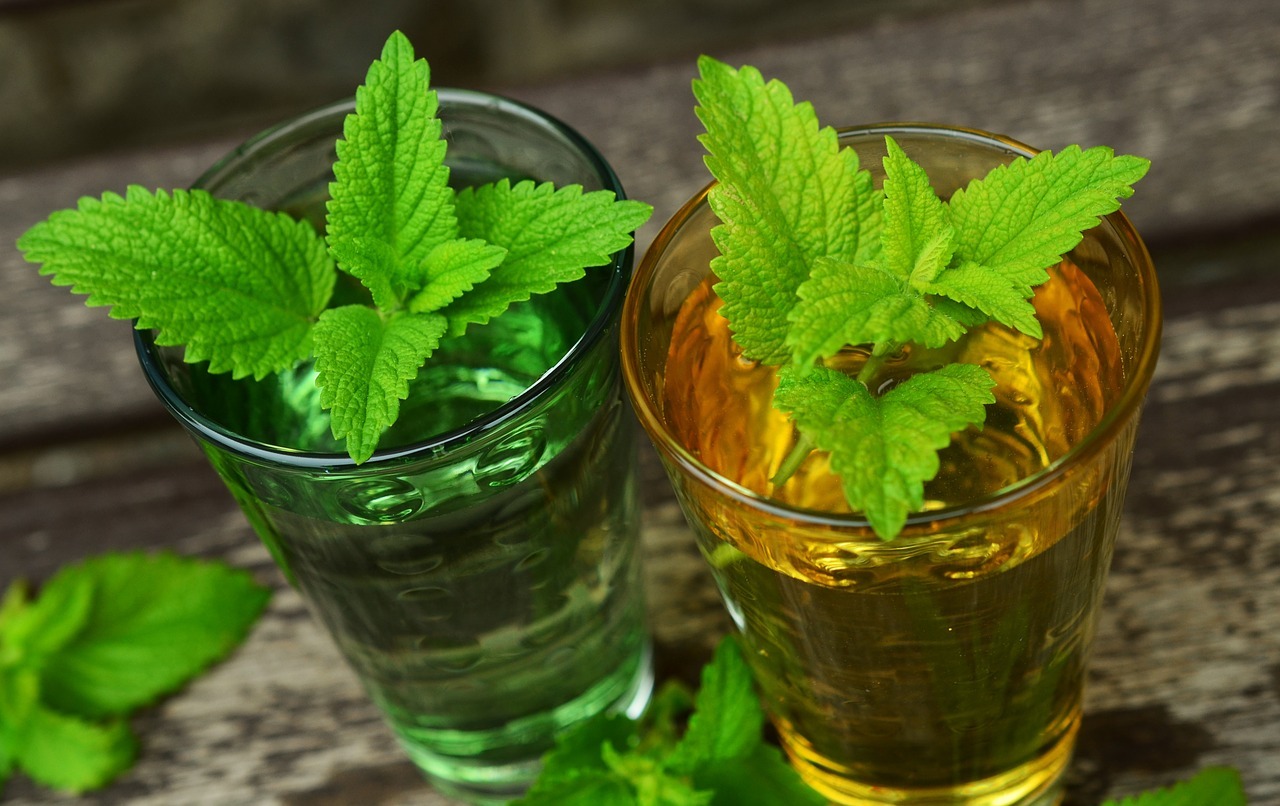Lemon balm, also known as balm mint, is a prolific perennial herb that belongs to the mint family. Its scientific name is Melissa officinalis. The leaves have a lemony scent. It is very attractive to honeybees.
Health Benefits and Side Effects
Lemon balm has been used traditionally for a long time for a variety of maladies. These include:
- Stress relief – it has been known to have a positive effect on mood and brain function. It encourages relaxation and increases calm.
- It may reduce anxiety, excitability, and nervousness.
- Lemon balm can aid in sleep – when combined with valerian, it can help against restlessness and insomnia.
- It can be used as a topical treatment for cold sores.
- It can encourage good digestion and relieve chronic indigestion and may also relieve nausea.
- Some find relief of menstrual cramps with the use of lemon balm.
- It can give relief from pain, including that of headache and toothache.
- It can be used as aromatherapy to treat Alzheimer’s and dementia and improve mental performance.
For some people, the internal use of more than 2g of lemon balm can cause upset stomach including nausea and vomiting, headache, dizziness, painful urination, wheezing, increased body temperature, or allergic reactions. It is recommended to take a break regularly from taking lemon balm – preferably a full week off after every three weeks of taking it. It could interact with medications for glaucoma or thyroid, as well as sedatives and serotonin-related drugs.
Using lemon balm grown in a home garden is generally safe; be sure to use a reputable company to purchase capsules or powder.
Food and Nutrition
One ounce (about 28g) of lemon balm provides 9 calories, .14g fat, 6.4mg sodium, 1.48g carbohydrates, .98g fiber, and .7g protein, along with vitamins A and C, calcium, and iron.
Lemon balm goes well with green tea to add a lemony minty flavor. It can also be added to lemonade for a bit of brightness.
Lemon balm combined with lavender, a bit of honey, and some water can be made into a tea that freezes beautifully into refreshing popsicles.
Lemon balm can be baked into quickbreads and cookies, made into a delicious jelly, or turned into a refreshing ice cream or gelato.
It can also be used in savory recipes, such as on fish, poultry, or vegetables, added into a salad, stewed into a soup, or baked into biscuits.
Other Uses
Lemon balm has anti-microbial properties and acts against fungus and bacteria. This means that it is an excellent addition to wound and skin creams and salves. It can be added to a lip balm to treat cold sores.
Insects, and particularly mosquitoes, dislike lemon balm, so it is also great to add into bug repellent compounds and to plant in areas where people spend time outdoors.
Infuse lemon balm in vinegar to make a mildly anti-viral cleaner.
Added into homemade soap with coconut oil, lemon balm becomes a skin health booster. It can also be added into a bath.
Growing
Lemon balm becomes a bushy plant that can be a couple feet tall and almost as wide. It is a perennial that, if left alone, will take over a yard or garden area. It likes sun but can handle some shade. It actually prefers cooler weather but does handle some heat, however, it is unlikely to thrive in hot and humid weather. Well-drained soil works best, but it can handle a range of moisture levels. It blooms into small flowers that are white or light yellow that bees and butterflies love. It has leaves shaped like elongated hearts with serrated edges.
Seeds can be started indoors; they germinate in about two weeks. Seeds need light, so plant shallow and set in a sunny window. They can be transplanted into the garden when frost is no longer happening.
Seeds can be sown outside in the fall for the next spring, or in spring around the end of the frost time. Divided plants can be planted at any time but will thrive better in cooler weather. Cuttings can also be used, starting in damp sand.
Young plants should be kept watered but once they are established, they are drought resistant.
Plants can be started about 8” apart but should be thinned to 18” apart when they reach a few inches tall. Rows should also be about 18” or so apart.
Because it repels many insects and has a good strong scent, it is good to plant it near plants in the cabbage family. These include broccoli, cauliflower, and similar plants. It can also be planted near fruit trees to encourage pollination.
Lemon balm can be harvested completely by cutting the plant down to 2-3 inches from the base, and it will grow back, up to three times a year. It can be used fresh, and fresh leaves can be stored in a zip-top bag for a few days in the refrigerator, or it can be dried and stored in an airtight container. Leaves can also be pinched off whenever needed throughout the growing season.
Do the last harvest just before winter and it will regrow in the spring from the remaining root and stem.
Lemon balm can also be grown indoors in windowsill pots. It smells nice and makes the whole area more cheerful. It will fill whatever pot it is put in; be sure it can drain as the plant does not like its roots to stay wet.

